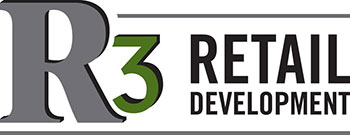In the beginning of our quest for energy, effectiveness outweighed efficiency. Creating fire from a loose bundle of foraged twigs and debris, along with the shelter to contain and maintain the heat distribution, was nothing short of a miracle. Over the years our resiliency would shine as we created stoves for warmth and cooking, and both carved out and transported massive blocks of ice to put in cellars for cold storage. The leap from kindling, to fossil fuels, to harnessing the wind and the sun to create environmentally friendly and sustainable energy sources has been a magnificent display of discovery and ingenuity. In today’s ever expansive world of energy use, we are now faced with one of the best problems to have: Options.
When I was a child my mother told me to be mindful of turning off the lights and the heat in my room before I left to school for the day. Now I had never seen an electric bill, and therefore had no reference to the difference a little vigilance on my part could make for my family’s budget. Now that I have small children of my own, I find myself constantly turning off lights, sinks, and closing doors to keep either warm or cool air in, depending on the season. I have a hard-enough time monitoring the stove when I’m cooking with a full house, how can I possibly give a second thought to my energy bill?
Most of us want the time and ability to focus on the important things in our lives such as family and friends, our careers, and which show is next on the binge-watching list. Often our expenses can be a huge distraction, and at times an interruption. But thanks to the breakthroughs in the development of Energy Management Systems (EMS), we now can fight back against beleaguering bills, as well as make a difference in the now-global effort of conservation. When you put systems in place to handle some of the more trivial issues you come across in your home or your business, you reduce the weight on your shoulders, and your wallet. EMS is the first step in lightening the load.
Working Less Pays Off
Imagine if your lights turned on and off exactly when you wanted them to 24/7, 365? Envision you never worried about leaving your HVAC system on all day running up your bill, or in contrast coming in and turning it on, waiting uncomfortably while the temperature adjusts to your needs. I don’t know if you have ever woken up to a refrigerator that went out in the middle of the night ruining everything inside, but I will tell you it is not an easy clean up or fix. If you had a sensor that warned you the minute the engine failed, or the temperature changed from your optimal setting, you might be able to salvage tomorrow’s lunch or last night’s left overs. On a larger scale when refrigeration systems fail, companies can be out thousands in lost product. Unless you put on a ski jacket and make room to sit in your cold case, how would you ever know if just one section, let alone the whole thing dropped or raised above the desired temperature? Part of EMS is the constant monitoring to detect problems in the present, and to collect data to prevent possible problems down the road.
Recording your daily energy use or “Metering” is a great way to get an in depth look at your energy consumption. This can help you to see where you are with being both efficient, and wasteful with your energy habits. Anything from a small office, to an industrial warehouse can be broken out to find your peak usage of energy to make decisions on how to reduce emissions, leading to lower costs. Energy Management Systems also uses 24-hour monitoring to detect potentially serious issues like gas leaks and high temperatures in large appliances and other machinery.
A Bright Future in Lighting Technology
Most people use their dimming switches in their homes to set the mood, and create an enjoyable ambiance. What a lot of people might not take into consideration is the benefit of how much they might be saving when doing so. Lighting Controls is one of the most effective parts of EMS, and can lead to lucrative opportunities. Growing up in my neighborhood you could look around and see all the porch lights on, and most of the lights inside the houses turned off. My dad would check the locks, turn off the lights, turn on the fans in the summer, and heat in the winter before finally retire for the evening. I’m sure if he had the option to automate all of that and save money on our utility bill, he would have signed up on the spot. Whether you have a small office, a mid-sized retail store, or a large-scale supermarket, controlling the use of your lights can help cost, and the environment. In fact, it’s that effect on the environment that has the government looking to incentivize those who choose to participate in the energy efficiency movement.
The State of California put Title 24 Building Energy Efficiency Standards into effect on July 1st, 2014. This policy is aimed particularly at renewable energy and energy efficient technologies. It focuses on lighting controls, and the replacement of less efficient lights with LED luminaries for both residential and nonresidential buildings. Once your compliance is signed off on by an Inspector for the California Energy Commission, you can qualify for rebates. This is one of many modern examples of how good, efficient energy performance is and becoming a requirement, rather than just a benefit.
Controlling the Chaos
In my life, I try to focus on the things I can manage rather than the things out of my control. Sometimes I wonder how nice it would be to be able to monitor and regulate things like traffic, the weather, and potty-training. My grandfather grew up on a farm in North Dakota of which firewood was his singular source of heat on those blistery snowy nights. His version of Lighting Controls was to coax his little brother into lighting the candles in the dining room before supper. Convenience and capability in the 21st century have caught on in a major way!
Although we can’t control sub-freezing temperatures outside, we can control and monitor the exact temperature of walk-in coolers from anywhere with remote connection. A perfect day at the beach can be hard to find, but the perfect temperature in your home or business can be maintained and even improved upon without you having to give it a second thought. There is no longer a need to worry about what was left on, when you or your employees locked up shop if you already have your lighting and heating and cooling systems on a schedule being monitored all day and night. Controlling the climate may be a prerogative for generations to come, but controlling your own carbon footprint through reducing your CO2 emissions with the use of Energy Management Systems is an option we all have at our fingertips.
With so many competing forms of effective and renewable energy sources, it’s no wonder the modern struggle has become how to streamline efficiency with abundance. We no longer ask if we can, but how well we can power our world. The evolution of energy technology and systems has taken us from gathering sticks in the forest, to monitoring sensors in an office. The future of energy consumption is conservation and maximizing efficiency. Industry innovations like Energy Management Systems is the new wave, and you don’t have to be a caveman to see the writing is on the wall.

